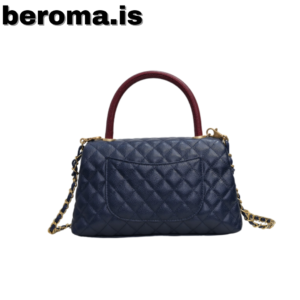 In the glitzy landscape of luxury fashion, where labels aren’t just labels but entire cultural signifiers, a shadowy market thrives in the periphery. We’re talking about ‘super fake’ designer bags, the almost-perfect replicas of the world’s most coveted arm candy, with online and offline markets teeming with these seductively deceptive products. But why are people flocking to counterfeits and what are the real implications for the fashion world?
In the glitzy landscape of luxury fashion, where labels aren’t just labels but entire cultural signifiers, a shadowy market thrives in the periphery. We’re talking about ‘super fake’ designer bags, the almost-perfect replicas of the world’s most coveted arm candy, with online and offline markets teeming with these seductively deceptive products. But why are people flocking to counterfeits and what are the real implications for the fashion world?
The Allure of Super Fakes
Super fakes are not your ordinary knock-offs; they are precision-engineered, high-quality, illegal replicas that a layperson could genuinely mistake for the real deal. But their allure goes beyond just saving money. It’s about the feeling of fitting in with a certain lifestyle without the price tag.
Affordability and Access
The most apparent draw is the cost. The prices of genuine Chanel, Louis Vuitton, or Gucci bags can range from a month’s rent to a comfortable year’s salary for an average person. Super fakes offer an escape hatch, allowing shoppers to indulge in luxury without financial constraints.
Perception and Social Pressure
In a society that often judges by appearances, the pressure to wear the right logo can be immense. Super fakes pave an immediate path to a desired image, whether it’s professional success, social status, or personal satisfaction.
Rapid Trend Turnover
Fashion is fickle, and luxury brands play to this by offering new collections every season. Super fakes allow trend chasers to keep up at a breakneck speed, without the guilt of an overburdened wallet.
The Dangers and Ethical Implications
The purchase and use of super fakes are not without repercussions – they are fraught with legal risks and ethical considerations.
Legal Consequences
Counterfeiting is a serious crime, and the penalties for producing, selling, and even buying super fakes can be severe. The fashion industry is relentless in its pursuit of those infringing on its copyrights and trademarks.
Ethical Hazards
The supply chain for super fakes is often murky, with practices ranging from outright exploitation to support of criminal enterprises. By engaging with these products, consumers might unwittingly abet the very problems the fashion industry aims to eradicate.
Impact on the Economy
The market for super fakes can siphon off a significant chunk of revenue from the legitimate fashion industry, impacting everything from stock prices to employment.
How to Spot a Super Fake
For the untrained eye, the line between super fake and authentic can be almost imperceptible. Here’s how you can distinguish the real from the replica.
Materials and Craftsmanship
Luxury brands invest heavily in the quality of materials and the artistry of craftsmanship. Look for details such as the feel of the leather, the precision of stitching, and the properties of metal hardware that are difficult to replicate perfectly.
Logos and Branding
Authentic bags have clear, consistent branding. Logos on super fakes may be slightly off in color or proportion. Pay attention to any inconsistencies in font or placement, as this is a common slip-up in the counterfeit world.
Serial Numbers and Labels
Most designer bags come with authenticity cards or serial numbers that can be cross-checked with the brand for verification. Super fakes may have these, but they often turn out to be fake, too!
The Moral of the Story
The allure of luxury is inescapable, but so are the responsibilities of the discerning consumer. The fashion world is a multifaceted diamond, and it’s about exploring its many sides while being conscious of the impact of our choices.
The insatiable demand for luxury isn’t likely to wane, but by informing consumers about the real risks of super fakes, the industry can foster a greater appreciation for genuine craftsmanship and ethical trade practices.
The choice between super fake designer bags and their authentic counterparts may seem small, but when it comes to shaping the future of fashion, it’s the sum of our choices that makes the difference.